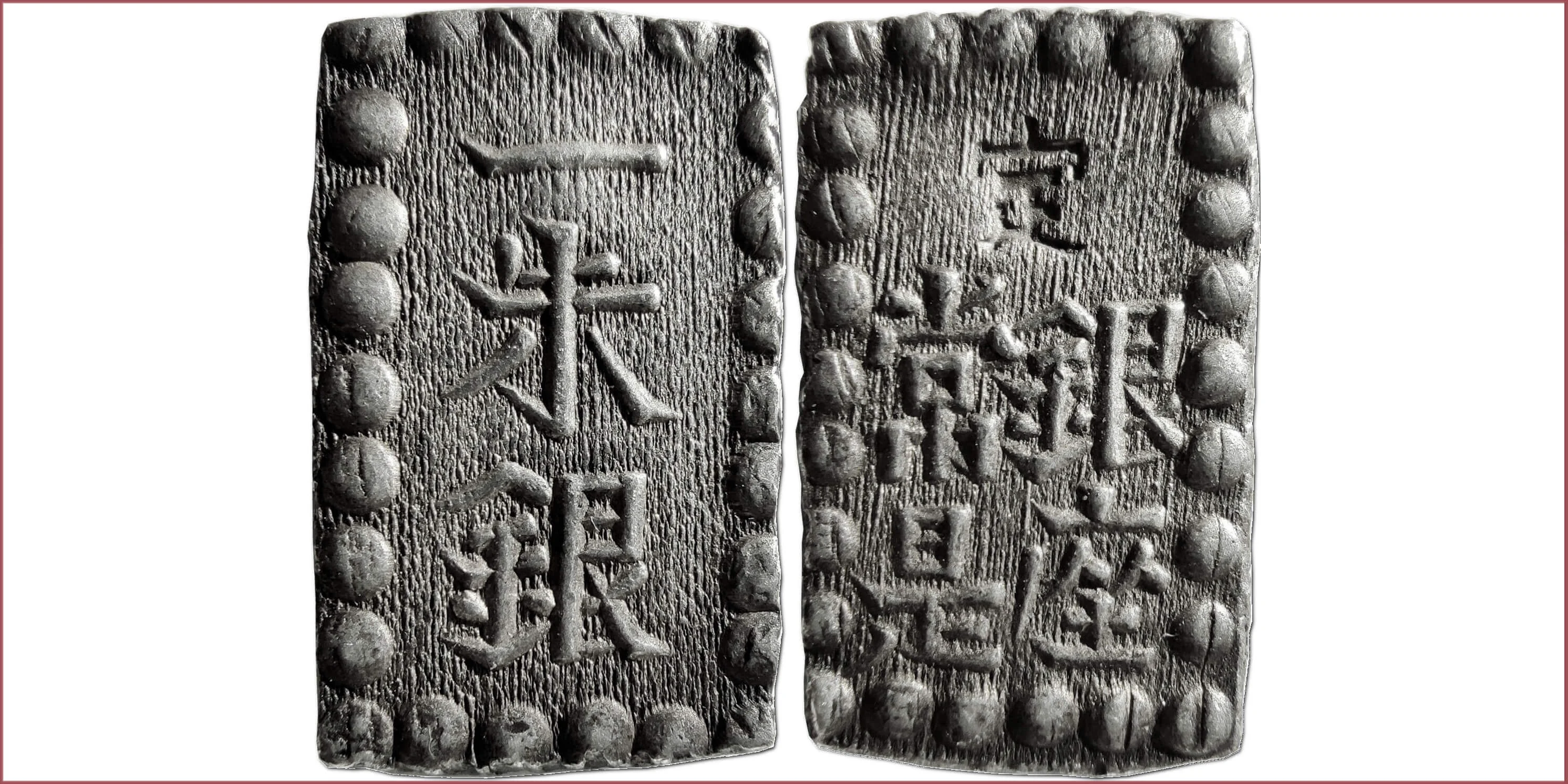SHU: COIN OF JAPAN
1 shu, 1853-1865: Japan (Edo shogunate / Tokugawa shogunate)
Ruler: Emperor Kōmei (孝明天皇) — the 121st Emperor of Japan (1846-1867).
Rectangular silver coin, traditional for ancient Japan.
ND (no date).
1 Shu "Kaei Isshugin": the imperial era proclaimed during the Edo period and type of silver coin in the Edo period.
一 朱 銀: vertical inscription "One shu silver".
Incuse stamp (embossed image) in the form of a hieroglyph 定: a sign guaranteeing the presence in the coin of silver equal in price to the specified denomination (in this case — one shu).
常銀: Ginza (Silver Mint).
The term "ginza" ("gin" /silver/ and "za" /place/) in the medieval and modern ages was used to describe mints in Japan, where silver coins were manufactured and silver bullion traded.
是座: the name "Jouze" (Jōze) of the master of coinage (controller /inspector, governor/ of the ginza silver mint).
- Silver (0.968): 17 mm - 1.95 g
- Reference price: 29$
COIN SHU — WHERE & WHEN (coins catalog: by names & emitents)
About the name of the coin shu: the name comes from the term "朱" (zhu), which means cinnabar (one of the oldest mineral paints: the main component — mercury sulfide).
According to another version, the name comes from the Chinese measure of weight zhu (later: an ancient Chinese coin) — an old measure of weight equal to the weight of 100 grains of millet.

